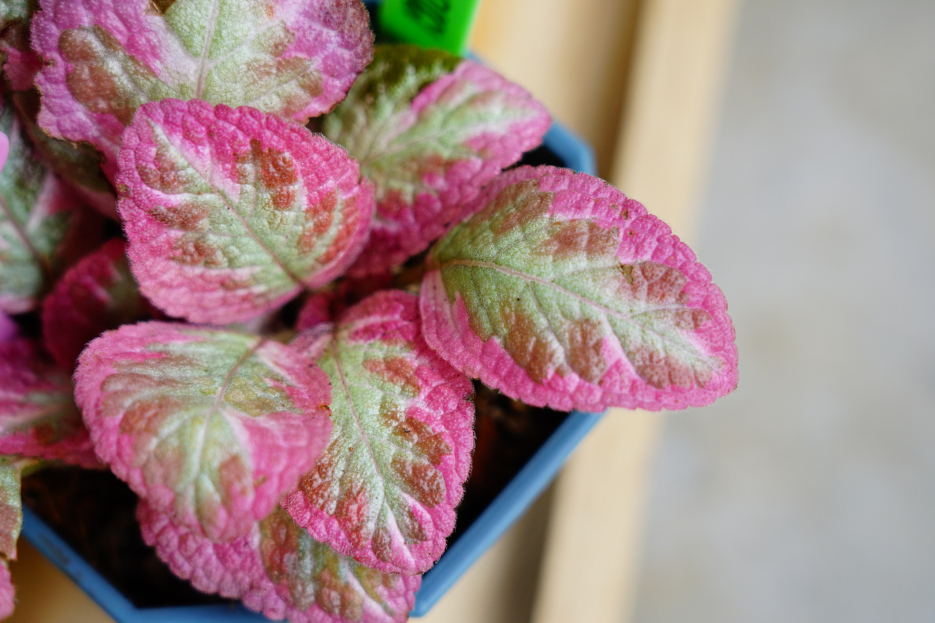
If you're searching for a plant with bold, colorful foliage and a soft, velvety texture, look no further than Episcia ‘Pink Brocade’. Often called Flame Violet, this low-growing tropical beauty is a close relative of the African violet and is cherished for its silvery-green leaves brushed with pink tones and a shimmer of copper—not to mention its small, tubular, coral-pink flowers that appear throughout the year.
Native to Central and South America, Episcia thrives indoors with the right warmth and humidity. It's a perfect addition to bright tabletops, terrariums, or hanging baskets, where its trailing stems can cascade elegantly over the edge.
Episcia ‘Pink Brocade’ thrives in bright, indirect light. Find a spot near an east or north-facing window is ideal. Too much direct sun can scorch its soft, fuzzy leaves, while too little light may cause the colors to fade and growth to slow.
Fluorescent or grow lights also work well, making this plant a great fit for desks and darker corners of your home.
Keep the soil evenly moist, but not soggy. Water when the top inch of soil of your plant feels dry to the touch. Episcia prefers a consistent watering schedule, and irregular watering can lead to wilting or leaf spotting.
Use room-temperature, non-chlorinated water, and avoid letting water sit on the leaves, as this can cause damage or rot. Bottom watering or watering at the base is best.
As a tropical plant, Episcia ‘Pink Brocade’ absolutely loves high humidity—60% or higher is ideal. Without it, the leaves may brown or curl. Boost humidity by:
Temperature should stay between 65–80°F (18–27°C). Avoid cold drafts or temperatures below 60°F (16°C), as Episcia is sensitive to chill.
Use a lightweight, well-draining soil, such as African violet mix, or make your own using:
Ensure the pot has drainage holes. Episcia has shallow roots, so a shallow, wide container works well. Repot annually or when the plant outgrows its space.
Feed every 2–4 weeks during the growing season (spring through fall) with a balanced, water-soluble fertilizer diluted to half strength. Skip fertilizing in winter when growth naturally slows.
Too much fertilizer can cause leaf burn, so err on the side of underfeeding.
Pinch back leggy or overgrown stems to maintain a full, compact shape. This will also encourage branching and flowering. Remove any yellow or damaged leaves to keep your plant healthy.
Episcia is naturally a trailing plant—let it spill over the edge of a pot or hanging basket, or trim it regularly to maintain a mound-like habit.
Episcia is very easy to propagate through stolons (runners). These small offshoots form baby plants at the end that can be:
Propagation is most successful during the warm growing season.
Episcia ‘Pink Brocade’ is considered non-toxic to pets, making it a safe and stunning choice for homes with cats and dogs.